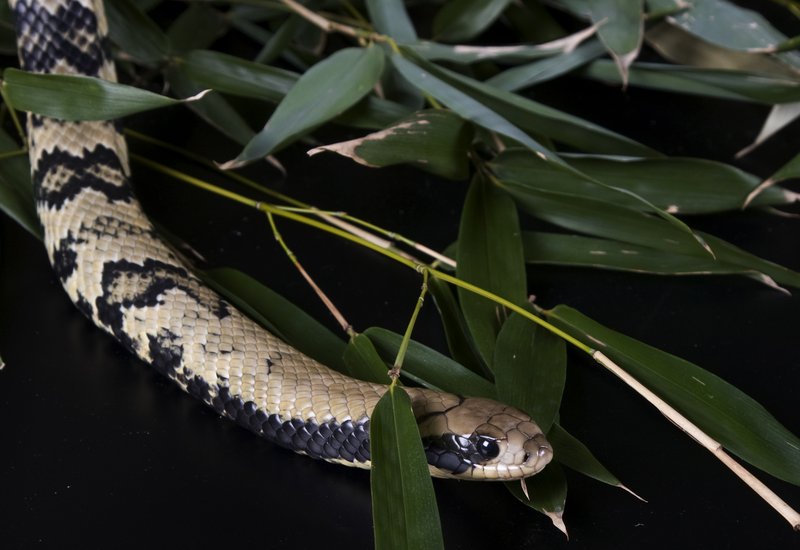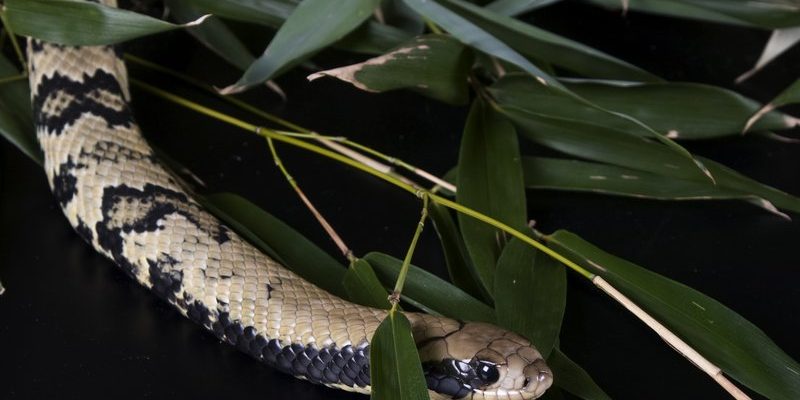
The False Water Cobra is one of those creatures that can take your breath away with its beauty and mystique. Imagine a snake that looks like a Cobra but isn’t one. Found primarily in the lush regions of South America, particularly in countries like Brazil and Peru, this snake is a marvel of nature. With its unique color patterns and mesmerizing movements, it can easily captivate anyone lucky enough to spot one in the wild.
Yet, here’s the twist—while it has a reputation for being somewhat intimidating, the False Water Cobra is generally non-venomous. It uses its striking appearance more as a defensive mechanism than anything else. When threatened, it can flatten its neck much like a Cobra does, which is where it gets its name. So, if you’re curious about this intriguing serpent, let’s dive deeper into what makes the False Water Cobra so special.
Physical Characteristics
The False Water Cobra typically measures between 5 to 7 feet long, although some can grow even larger. Its body is sleek and cylindrical, which aids in swift movement through water. One of the most eye-catching features of this snake is its coloration. While the base color can vary from brownish-grey to greenish, it often has stunning black or dark brown patterns running along its length. This coloration provides both camouflage in its natural habitat and a striking visual for those lucky enough to spot one.
The snake’s head is another noteworthy feature. It is slightly wider than its neck, giving it that characteristic Cobra look. However, it lacks the typical hood of a true Cobra, which is a nice reminder that it’s all about intimidation rather than actual threat. Its eyes are large and round, giving it excellent vision, especially in low light conditions. So, when you’re in its habitat, you can imagine this snake slipping through water with grace, hunting its next meal.
Additionally, its smooth scales are another factor that contributes to its appeal. They help the False Water Cobra move efficiently, whether it’s climbing trees or swimming in rivers. This snake is built for versatility in its environment, which is a testament to its adaptability and survival skills.
Habitat and Distribution
False Water Cobras thrive in a variety of environments, especially in tropical rainforests, swamps, and wetlands across South America. They are typically found near rivers and streams, as they are excellent swimmers. This snake enjoys a humid environment where it can hide among foliage, rocks, or even submerged logs. The tropical weather in areas like the Amazon provides the perfect backdrop for their active lifestyle.
You might be wondering about their distribution. They are primarily found in Brazil, but their range extends to other parts of South America such as Peru and Paraguay. The diversity of ecosystems they inhabit means that these snakes can adapt to different habitats, showcasing their resilience. They are mostly terrestrial but have developed a knack for climbing too, which allows them to explore a wider range of environments.
Interestingly, while False Water Cobras are common in their native habitats, they’re not frequently spotted due to their excellent camouflage. This makes them a bit of a mystery for wildlife enthusiasts and researchers alike. As such, understanding their habitat can provide valuable insights into their behavior and lifestyle.
Diet and Feeding Habits
The diet of the False Water Cobra is quite varied, consisting mainly of small mammals, birds, and amphibians. They are constrictors, meaning they kill their prey by wrapping around it and squeezing until it can no longer breathe—much like a big hug gone wrong! This technique is particularly effective when they hunt in water or among dense foliage.
When hunting, False Water Cobras use their keen eyesight and sense of smell to locate their prey. Once they’ve spotted a target, they strike with remarkable speed, often surprising unsuspecting animals. It’s fascinating to watch this snake in action, as it moves with a confidence that comes from its position at the top of the food chain in its environment.
After capturing their meal, these snakes often take their time to enjoy their food, swallowing it whole. Given their size, they can consume prey that is surprisingly large relative to their own body width. This adaptability in their diet helps them thrive in varying conditions and emphasizes their role in the ecosystem as efficient predators.
Behavior and Temperament
The behavior of the False Water Cobra can be quite intriguing. Generally, these snakes are known to be relatively docile, especially when they feel safe in their environment. They usually prefer to escape rather than confront a threat. However, when provoked, they can display defensive behaviors that mimic those of a true Cobra. For instance, they may flatten their necks and hiss loudly, which can be quite a sight for anyone caught off-guard.
You might be surprised to learn that they are also quite curious creatures. If approached slowly and calmly, a False Water Cobra may show interest rather than fear. This behavior can make them fascinating subjects for observation in both the wild and captivity.
In captivity, False Water Cobras can adapt to handling, but it’s essential to treat them with respect. While they might not be venomous, they still can bite if they feel threatened. Understanding their behavior allows enthusiasts to appreciate this beautiful snake without fear. It’s all about creating a trusting environment where both the observer and the snake can feel secure.
Reproduction and Lifespan
The False Water Cobra engages in fascinating reproductive behaviors. Breeding usually occurs in the warmer months, and females give birth to live young, which is a unique feature among snakes. Depending on the conditions, a single female can produce between 15 to 30 baby snakes in one clutch. The baby snakes are miniature versions of their parents, often measuring about a foot long at birth.
In terms of lifespan, False Water Cobras can live quite long in captivity—often reaching up to 15 years or more. Their lifespan in the wild, however, can vary significantly due to factors such as predation, habitat loss, and food availability. It’s essential to provide these snakes with an appropriate environment in captivity to ensure they thrive and reach their full potential.
You may find it intriguing that mating habits can change depending on environmental conditions. For instance, during the rainy season, these snakes may become more active in searching for mates. This adaptability shows just how resilient and resourceful the False Water Cobra can be in varying situations.
Keeping False Water Cobras as Pets
If you’re thinking about adopting a False Water Cobra, there are several factors to consider. These snakes require specific care to thrive, including an appropriately sized terrarium, temperature regulation, and humidity control. Their habitat should mimic their natural environment, featuring hiding spots, water for swimming, and a variety of climbing surfaces.
Feeding your False Water Cobra is another essential aspect of care. A diet primarily consisting of rodents is recommended, and it’s crucial to feed appropriately sized prey. This means offering prey that isn’t too large to avoid health issues. It’s a good idea to provide this snake with a varied diet, which can help keep it entertained and healthy.
Handling these snakes can also be rewarding, but patience is key. Approach them gently and calmly, allowing them to acclimate to your presence. With time, many False Water Cobras may become more tolerant of handling, showcasing their unique personalities and charm. Remember, keeping any exotic pet requires ongoing commitment and effort, so always research thoroughly before bringing one home.
Conservation Status
While the False Water Cobra itself is not currently listed as endangered, its habitat faces various threats that could affect its population in the future. Deforestation, pollution, and climate change are pressing concerns that compromise the ecosystems where these snakes thrive. As these natural habitats diminish, the False Water Cobra’s chances of survival in the wild can diminish, too.
Conservation efforts are crucial in helping protect their natural environments. By supporting organizations focused on wildlife preservation and awareness, we can contribute to the safeguarding of habitats that many species, including the False Water Cobra, depend on. Every little bit helps, whether it’s through donations, advocacy, or simply spreading awareness about these remarkable snakes.
Every time we investigate and understand the lives of creatures like the False Water Cobra, we contribute to a greater knowledge of biodiversity. This can have a lasting impact on conservation efforts, ensuring that future generations also have the chance to experience the wonder of these unique reptiles.
FAQ
What is the False Water Cobra’s native range?
The False Water Cobra is primarily found in tropical regions of South America, particularly in countries like Brazil, Peru, and Paraguay. These areas offer the humid habitats that this snake thrives in, usually near rivers and swamps.
Is the False Water Cobra venomous?
No, the False Water Cobra is non-venomous. While it may display defensive behaviors similar to a true Cobra, it poses no significant threat to humans. Its beauty and charm come from its appearance rather than its venom.
How does the False Water Cobra hunt?
This snake is a proficient hunter, utilizing its excellent vision and sensing abilities. It preys on small mammals, birds, and amphibians, often using its constricting technique to capture and consume its meals.
Can False Water Cobras be kept as pets?
Yes, many people keep False Water Cobras as pets, given their relatively docile nature. However, potential owners should educate themselves on the specific care requirements, including habitat, diet, and handling.
How long do False Water Cobras live?
In captivity, False Water Cobras can live up to 15 years or more with proper care. In the wild, their lifespan may be shorter due to environmental challenges.
What do False Water Cobras eat?
False Water Cobras primarily consume small rodents, birds, and amphibians. A diverse diet helps maintain their health and well-being, whether in the wild or in captivity.
Why are False Water Cobras considered fascinating?
These snakes are beautiful and exhibit unique behaviors, such as their remarkable swimming ability and defensive posturing. Their adaptability and curious nature make them interesting subjects for observation in both natural and captive settings.
Are False Water Cobras social creatures?
False Water Cobras tend to be solitary animals. They generally prefer to live alone, coming together only during mating season. Understanding their habits can enhance our appreciation of their behavior.
What threats do False Water Cobras face in the wild?
Habitat loss due to deforestation, pollution, and climate change are significant threats to the False Water Cobra. These factors can diminish the availability of their natural habitats, which can lead to decreased populations.
Can False Water Cobras swim?
Absolutely! The False Water Cobra is an excellent swimmer. Its streamlined body is designed for efficient movement through water, allowing it to hunt and navigate its aquatic environment effortlessly.
What is the best way to observe a False Water Cobra in the wild?
When observing False Water Cobras in their natural habitats, patience and respect are key. Approach slowly, keeping a safe distance, and remain quiet to avoid startling them. This way, you can appreciate their beauty without causing stress to the snake.
How do False Water Cobras adapt to their environment?
These snakes have remarkable adaptability, allowing them to thrive in diverse habitats. Whether climbing trees or swimming in water, their physical traits and behaviors enable them to navigate their environments effectively.
Are there any conservation efforts focused on False Water Cobras?
While not specifically targeted, many conservation efforts aimed at preserving tropical habitats indirectly benefit False Water Cobras. Supporting wildlife organizations can help ensure these environments remain intact for future generations.

